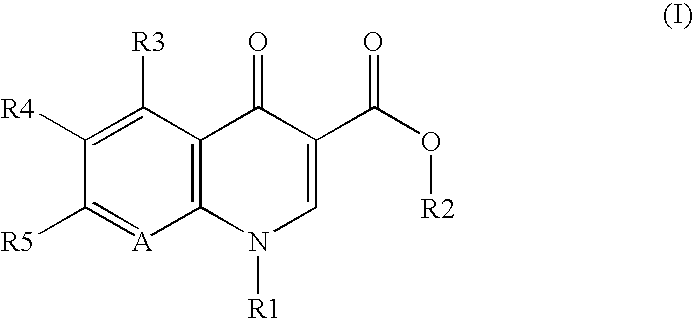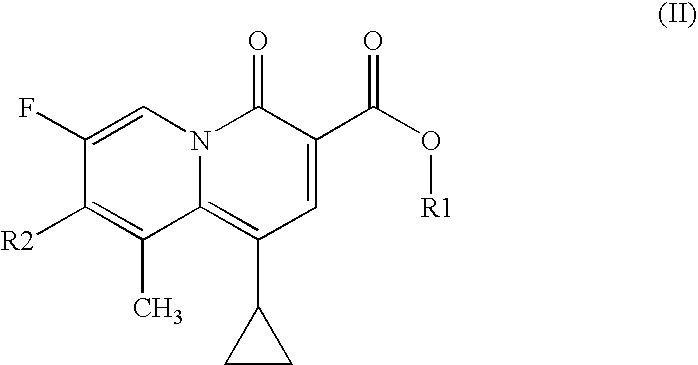Use of chemotherapeutic agents
a chemotherapeutic agent and a technology for chemotherapy, applied in the direction of drug compositions, aerosol delivery, metabolic disorders, etc., can solve the problems of residual microorganisms being left behind, risk of false diagnosis, and inconsistent clinical pictures, and achieve rapid bactericidal action, good local tolerability, and high activity
- Summary
- Abstract
- Description
- Claims
- Application Information
AI Technical Summary
Benefits of technology
Problems solved by technology
Method used
Image
Examples
example 1
[0110]
Moxifloxacin HCl solutionmoxifloxacin hydrochloride500 mgaqua pro injectionead 100 ml
example 2
[0111]
High-viscosity formulation: moxifloxacin HCl gelmoxifloxacin hydrochloride 1.0 ghydroxyethyl cellulose 0.5 gpropylene glycol 1.5 gdistilled water ad10.0 g
example 3
[0112]
Low-viscosity formulation with stabilizer: moxifloxacin — HCl gelmoxifloxacin hydrochloride1.0 ghydroxyethyl cellulose0.25 g propylene glycol1.5 g1% Tween 20 solution1.0 gdistilled water ad10.0 g
PUM
| Property | Measurement | Unit |
|---|---|---|
| concentration | aaaaa | aaaaa |
| concentrations | aaaaa | aaaaa |
| concentrations | aaaaa | aaaaa |
Abstract
Description
Claims
Application Information
 Login to View More
Login to View More - R&D
- Intellectual Property
- Life Sciences
- Materials
- Tech Scout
- Unparalleled Data Quality
- Higher Quality Content
- 60% Fewer Hallucinations
Browse by: Latest US Patents, China's latest patents, Technical Efficacy Thesaurus, Application Domain, Technology Topic, Popular Technical Reports.
© 2025 PatSnap. All rights reserved.Legal|Privacy policy|Modern Slavery Act Transparency Statement|Sitemap|About US| Contact US: help@patsnap.com


